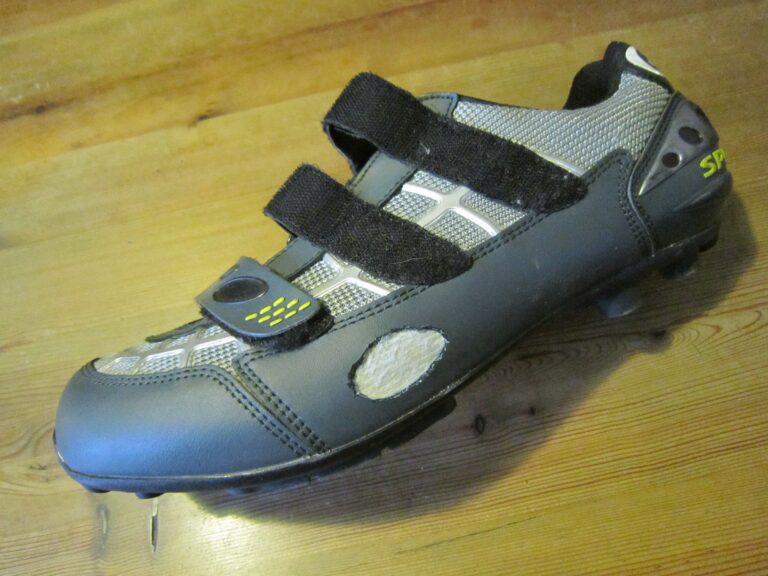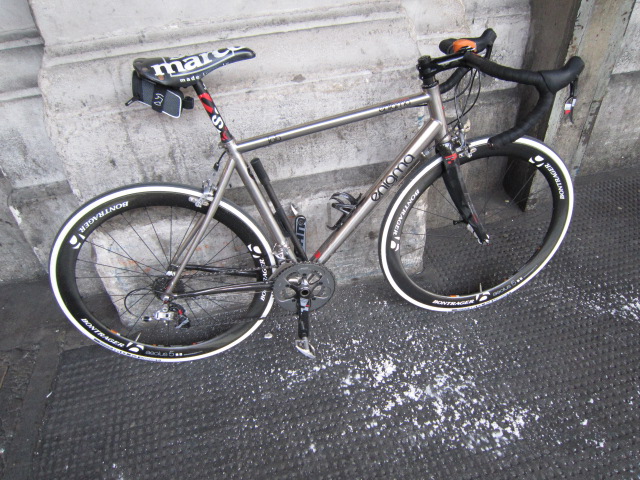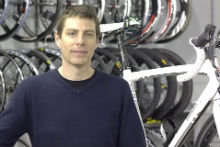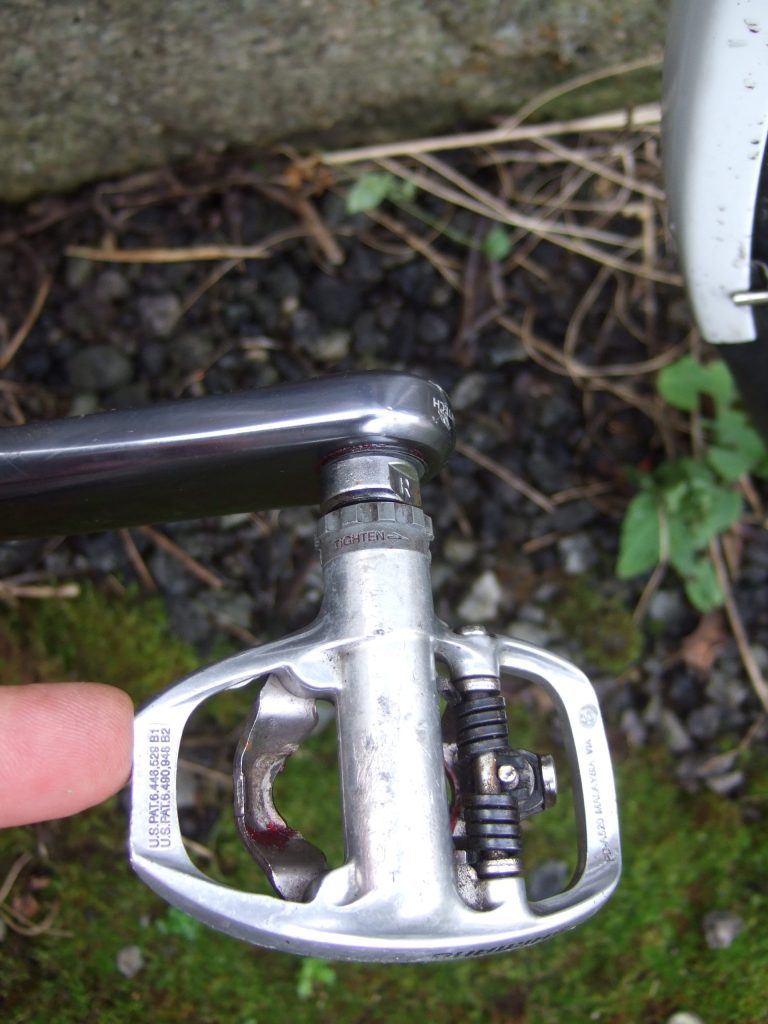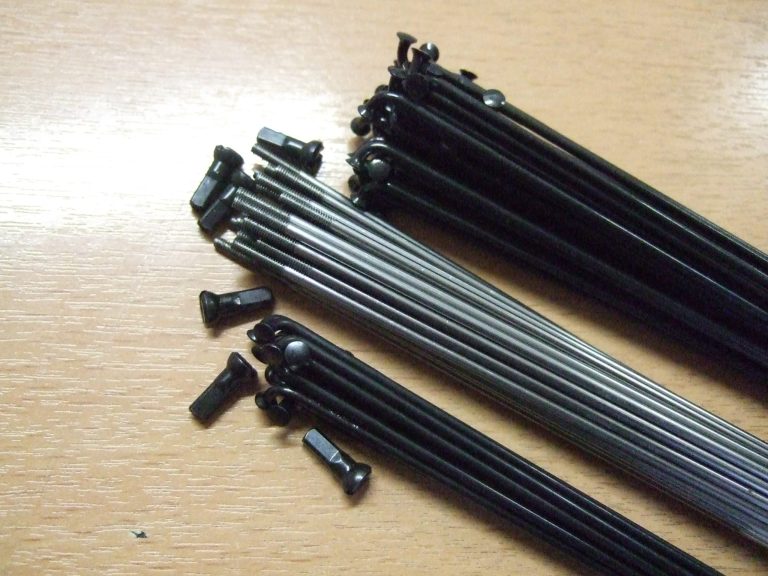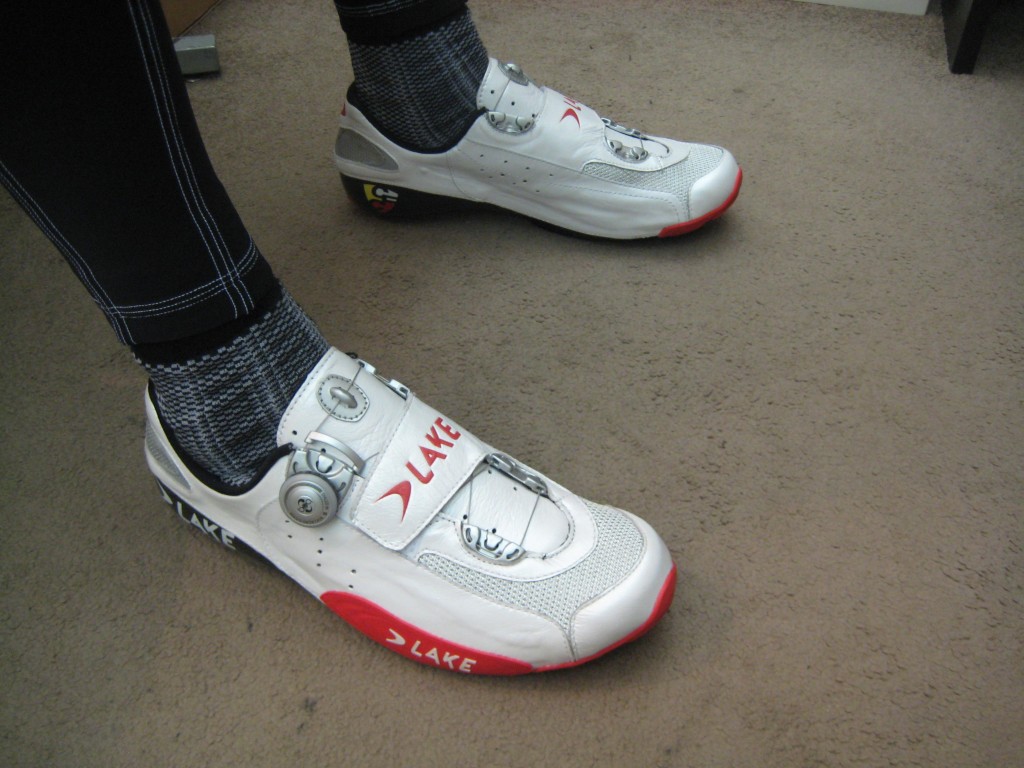
US shoe manufacturer Lake has a long history of making attractive cycling shoes with a difference, this often meaning the use of tough kangaroo-skin leather for the upper. A chance conversation with occasional RCUK contributor Phil Cavell of Cyclefit revealed the firm’s CX 401 model offers another, more important ( at least from my point of view) distinction; it offers perhaps the most rearward cleat positioning possibility of any production road pedal cleat format shoe.
Despite a trend towards more rearward cleat positioning for road shoes, almost all have their cleat mounting threads placed to limit rearward cleat adjustment to a position further forward than is possible with most mountain bike shoes. It is not entirely clear why this should be so, but it is odd given that it would seem reasonable for the cycling shoe industry to offer the same cleat positioning range for both road and off-road use.
Personally, I have for several years favoured cleats set well back in the shoe to put the foot – and in particular the ball thereof – further forward over the pedal axle than is usually recommended by cycle set-up authorities . This has generally left me unable to use non-recessed cleat road shoes and pedals without experiencing discomfort in the calf muscles and over the front of the knee.
A pair of Lake’s CX 401 shoes should address this problem and allow access to the manifold benefits of road shoe and pedal technology. The shoes have the further attraction of a mouldable carbon-fibre heel; the thermoplastic resin used for the heel section of the outsole allows the shoe to be moulded to an exact fit for the rider’s foot.
To find out, RCUK went along to Lake dealer Cyclefit’s Macklin Street, Covent Garden premises for a fitting. This involves, firstly, accurate measurement of the feet. Mine both turned out to be size 44.5s, with the right foot marginally larger. We tried both 44.5 and 45 sizes; tried prior to moulding, the 44.5s felt a little small – the tip of the big toe touched the front of the toe box – but the foot was clearly not as far back as the heel cup would allow if wider; 44.5 it was.
Both are on the borderline between standard and wide fittings; given the mouldable heels, we opted for standard width in order to ensure the feet would be well-supported under pedalling loads. Next, the shoes were warmed to around 70degC in a small cabinet originally supplied for the purpose by Shimano; once they were warmed throughout, Matt pulled them out and offered me each in turn to pull on.
At this point I was both glad of the warmth – my feet were getting cold – and of the insulating properties of the socks I was wearing; 70degC is hot enough to hurt if not actually burn. Both quickly cooled once on, with Matt squeezing and prodding them as they did so to ensure they conformed to the shape of my feet. The difference between the fit of the shoes out of the box and once softened up was immense. The heel counter in particular took on a much wider form, with both shoes offering much more toe space once the foot had moved backwards into the heel cup.
As the shoes cool, the resin stiffens leaving the thermoplastic parts such as the heel cup permanently reformed to the shape of the foot. Having decided they were cool enough to retain their shape during removal, Matt asked for them back and took them away to chill out in the freezer. Returned cold, they felt snug and supportive and were ready for wear.
The test pair has Lake’s Speedplay Zero pedal-specific sole. This has the advantage over the universal three-bolt fitting sole, when used with Speedplays, of reducing the pedalling platform height – distance from pedal axle centre line to top of pedal insole – by some 3mm.
First Ride coming soon.
Add your review or see more on MporaGear

